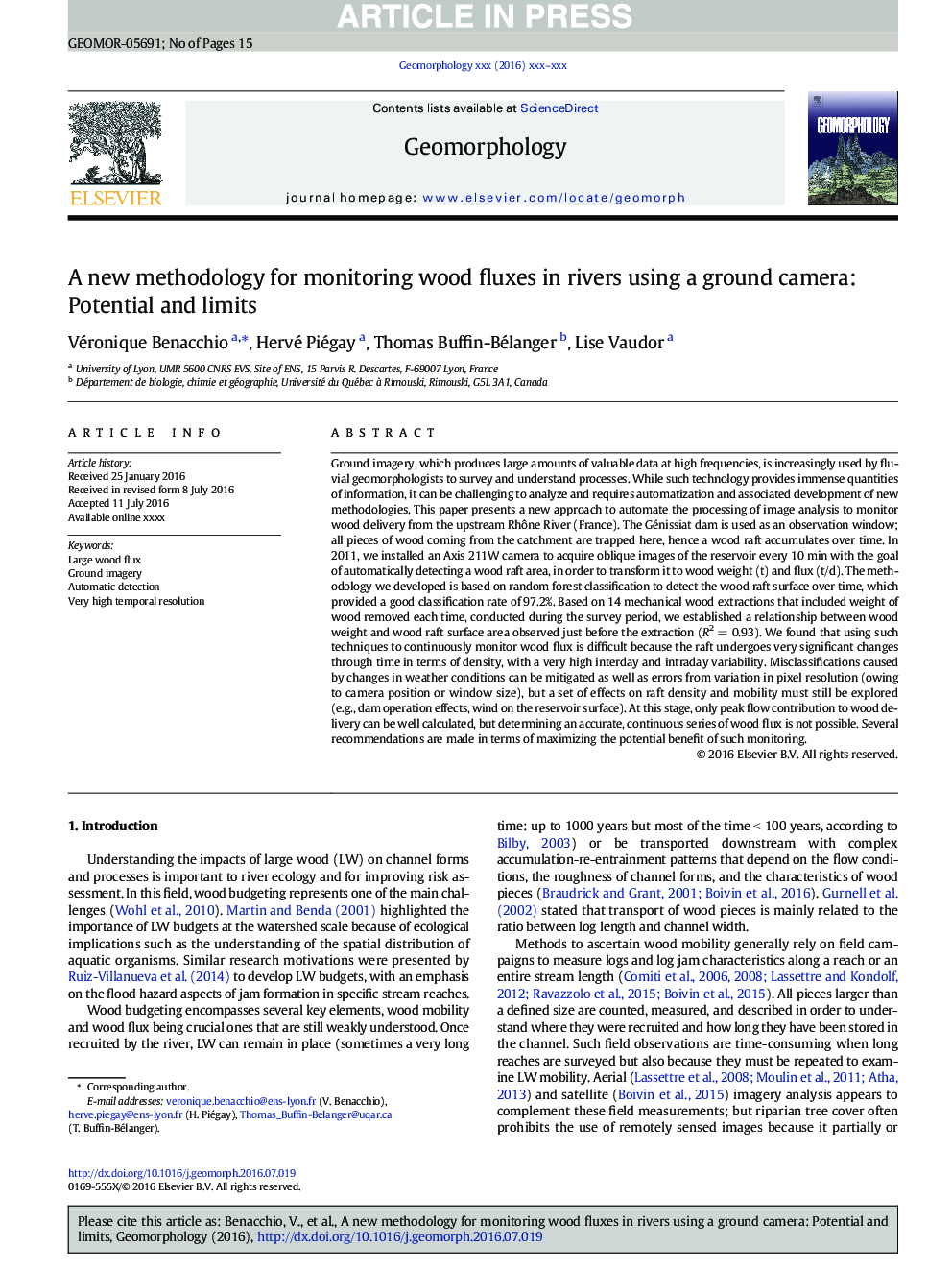| کد مقاله | کد نشریه | سال انتشار | مقاله انگلیسی | نسخه تمام متن |
|---|---|---|---|---|
| 5781159 | 1635370 | 2017 | 15 صفحه PDF | دانلود رایگان |
عنوان انگلیسی مقاله ISI
A new methodology for monitoring wood fluxes in rivers using a ground camera: Potential and limits
ترجمه فارسی عنوان
یک روش جدید برای نظارت بر جوش های چوبی در رودخانه ها با استفاده از یک دوربین زمین: پتانسیل و محدودیت
دانلود مقاله + سفارش ترجمه
دانلود مقاله ISI انگلیسی
رایگان برای ایرانیان
کلمات کلیدی
شار چوب بزرگ، تصاویر زمین تشخیص خودکار، قطعنامه زمانی بسیار زیاد،
موضوعات مرتبط
مهندسی و علوم پایه
علوم زمین و سیارات
فرآیندهای سطح زمین
چکیده انگلیسی
Ground imagery, which produces large amounts of valuable data at high frequencies, is increasingly used by fluvial geomorphologists to survey and understand processes. While such technology provides immense quantities of information, it can be challenging to analyze and requires automatization and associated development of new methodologies. This paper presents a new approach to automate the processing of image analysis to monitor wood delivery from the upstream Rhône River (France). The Génissiat dam is used as an observation window; all pieces of wood coming from the catchment are trapped here, hence a wood raft accumulates over time. In 2011, we installed an Axis 211W camera to acquire oblique images of the reservoir every 10 min with the goal of automatically detecting a wood raft area, in order to transform it to wood weight (t) and flux (t/d). The methodology we developed is based on random forest classification to detect the wood raft surface over time, which provided a good classification rate of 97.2%. Based on 14 mechanical wood extractions that included weight of wood removed each time, conducted during the survey period, we established a relationship between wood weight and wood raft surface area observed just before the extraction (R2 = 0.93). We found that using such techniques to continuously monitor wood flux is difficult because the raft undergoes very significant changes through time in terms of density, with a very high interday and intraday variability. Misclassifications caused by changes in weather conditions can be mitigated as well as errors from variation in pixel resolution (owing to camera position or window size), but a set of effects on raft density and mobility must still be explored (e.g., dam operation effects, wind on the reservoir surface). At this stage, only peak flow contribution to wood delivery can be well calculated, but determining an accurate, continuous series of wood flux is not possible. Several recommendations are made in terms of maximizing the potential benefit of such monitoring.
ناشر
Database: Elsevier - ScienceDirect (ساینس دایرکت)
Journal: Geomorphology - Volume 279, 15 February 2017, Pages 44-58
Journal: Geomorphology - Volume 279, 15 February 2017, Pages 44-58
نویسندگان
Véronique Benacchio, Hervé Piégay, Thomas Buffin-Bélanger, Lise Vaudor,
